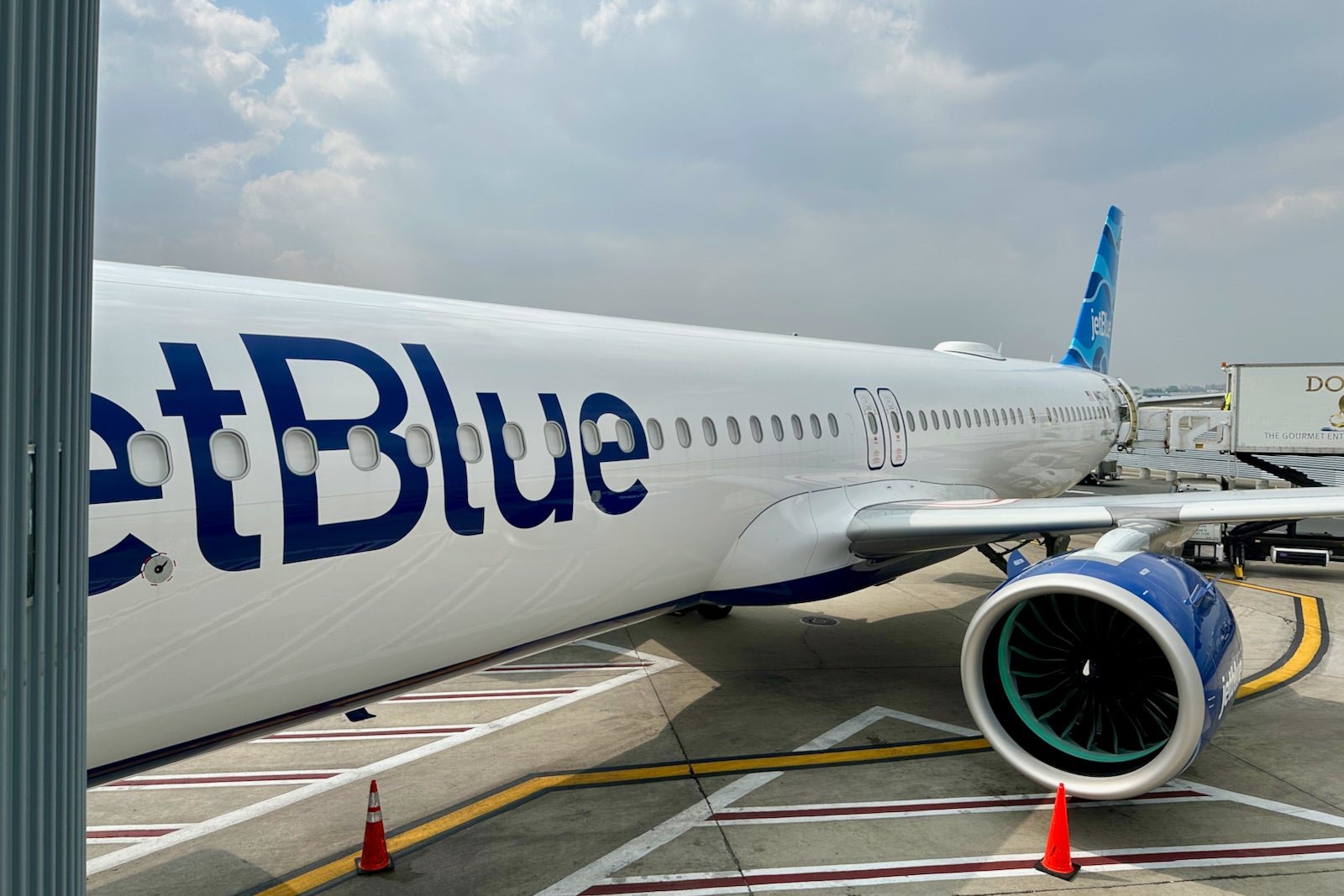JetBlue, the popular low-cost airline, is making some significant changes to its route map in an effort to improve profitability. The airline will end all service to Baltimore/Washington International Thurgood Marshall Airport (BWI) on May 1, and it will also cut or suspend several other routes. This news was first reported by CNBC, citing an internal memo from Dave Jehn, JetBlue’s vice president of network planning and airline partnerships.
Among the routes that will be cut are nonstop service from New York’s John F. Kennedy International Airport (JFK) to Portland, Oregon, and San Jose, California. Flights from JFK to Milwaukee and Ponce, Puerto Rico will also be suspended starting this fall. Additionally, JetBlue will end its nonstop route between Westchester County Airport (HPN) in New York and Martha’s Vineyard Airport in Massachusetts. However, the airline will still serve these cities from its other bases.
JetBlue’s decision to cut these routes is part of its strategy to be more selective about where it flies in order to turn a profit and support its overall network strategy. According to Jehn, the airline cannot fly everywhere it wants to, so it needs to prioritize routes that are more likely to be profitable and support a reliable operation.
The timing of these route cuts comes just three days after the Justice Department blocked JetBlue’s plan to merge with Spirit Airlines. However, JetBlue insists that the decision to cut these routes was made before the court’s ruling on the merger. The airline states that these cuts are necessary to help return the business to profitability and that the routes being cut have recently underperformed expectations.
JetBlue also mentions that these cuts were made with an eye towards reliability. By removing some of the less in-demand flights, the airline aims to give its operation more breathing room, especially in the face of air traffic control challenges in the northeast. Lengthening turn times and allowing more buffer into the system will help reduce the chances of delays and ensure that customers can get to their destinations on time.
It’s important to note that JetBlue regularly updates its route map, adding new flights that it believes will perform well and cutting others that haven’t met expectations. In addition to these regular adjustments, JetBlue’s network has been in flux since its Northeast Alliance with American Airlines ended this summer. The alliance allowed JetBlue and American to collaborate on flights from New York and Boston airports, but it was forced to be unwound due to a court ruling.
In October, JetBlue announced the cutting of 14 routes, including some that it had launched in partnership with American Airlines. The airline also dropped all service from Burlington, Vermont. These changes are all part of JetBlue’s efforts to adapt to evolving travel patterns and improve profitability.
In conclusion, JetBlue’s decision to cut several routes and drop one city altogether is aimed at improving profitability and supporting its overall network strategy. The airline is being selective about where it flies in order to turn a profit and ensure a reliable operation. These changes are part of JetBlue’s ongoing efforts to adapt to the post-COVID travel landscape and maximize profitability.

